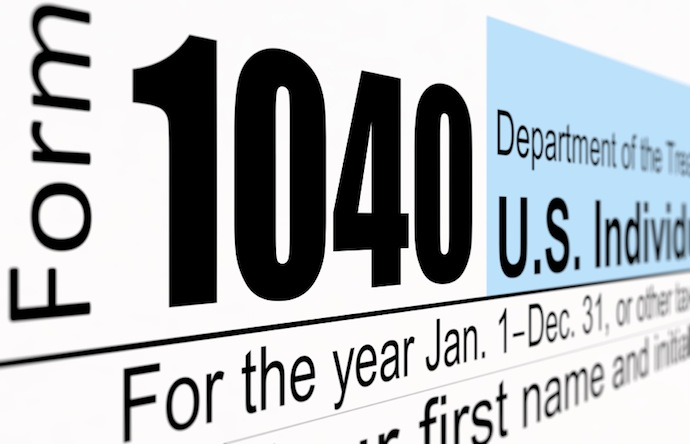Whether you’re moving to a new home for a job, family reasons, or simply for a change of scenery, the costs associated with relocating can quickly add up. In the course of planning your move, you may be asking yourself: Are moving expenses tax deductible?
In this comprehensive guide, we’ll explore everything you need to know about moving expenses and tax deductions, who can claim these deductions, what qualifies as a deductible expense, and how to claim them on your Internal Revenue Service (IRS) tax return.
What are moving expenses?
“Moving expenses” are one hidden cost of owning a home. The term refers to the costs associated with relocating your home or workplace, including packing and transportation of household goods, travel expenses (rental truck, mileage or gas costs), insurance, and temporary storage. Moving expenses can also cover short-term lodging, such as staying in a hotel for a night. These expenses are usually worth tracking for an employer who might cover the cost of a move, but it’s also worth asking “Can I deduct moving expenses on my tax return?”
Are moving expenses tax deductible?
Unfortunately, the short answer is moving expenses are only tax deductible for active-duty members of the military.
The number of people who used to benefit from deducting moving expenses shrunk considerably with the passing of the Tax Cuts and Jobs Act (TCJA) of 2017. This law introduced significant changes to the tax code, eliminating deductions for moving expenses for most taxpayers between 2018 and 2025, except for certain members of the Armed Forces and their families. Prior to 2018, many people who moved for work would qualify for a relocation tax deduction.
Active-duty members of the military still need to meet certain criteria to qualify for moving expense deductions. It’s important to consult the IRS guidelines or talk with a tax professional to ensure you’re compliant, but let’s quickly go over some of the requirements to qualify.
How can I qualify for a deduction as an active-duty military member?
IRS Form 3903 says “you can deduct moving expenses only if you are a Member of the Armed Forces on active duty and, due to a military order, you, your spouse, or your dependents move because of a permanent change of station.”
The IRS allows members of the armed forces to deduct certain moving expenses, even if they don’t meet the usual distance and time tests. This exception recognizes the frequent relocations that military service often requires. However, you must still meet certain criteria for this deduction, so ask yourself these questions to see if you qualify:
- Are you an active-duty military member who permanently moved to a new base in compliance with a military order?
- Are you the dependent or spouse of a military member who moved for a permanent change of station?
- Did you recently retire from active duty and move within one year of retiring?
- Are you the dependent or spouse of a military member who died, was imprisoned or deserted?
What if I’m not an active-duty military member?
As of 2018, the TCJA eliminated the moving expense deduction for most non-military taxpayers. Under the previous tax law, individuals could deduct qualified moving expenses if they met certain distance and time tests. The old rules allowed you to qualify if:
- Your employer didn’t pay or reimburse the moving costs and exclude the amount from your income.
- Your new work location was a specific distance from your former home.
- Depending on your employment status, you met a certain amount of time worked in the first one to two years after the move.
The new law, however, restricts this deduction to active-duty military personnel only. This change removes many tax benefits associated with moving, making it important to plan and budget accordingly.
However, there is one exception: if you moved prior to 2018 and did not deduct your moving expenses on your tax return for that year, you may be able to claim that deduction on a future return.
What if my employer paid for my move?
Under the TCJA, employer-paid moving expenses are considered taxable income, meaning you’ll probably need to report them on your tax return. However, if you meet the requirements for active-duty military personnel, you may qualify for an exception if you received moving expense reimbursements from the government. To be on the safe side, talk with your tax professional to ensure accurate reporting and to understand any potential offsets or deductions.
Which moving expenses are tax deductible?
According to the IRS guidelines, these moving expenses may be deductible for qualifying active-duty military members (if they have not been reimbursed or furnished in kind):
- Moving household goods and personal effects: You cannot deduct expenses for moving furniture or other goods you bought going from your old home to your new home.
- Storing and insuring household goods and personal effects: You can deduct the cost of storing and insuring your household goods and personal effects after 30 consecutive days after they have been moved from your former home and before they are delivered to your new home.
- You can deduct expenses for hauling a trailer, packing, crating, in-transit storage, and insurance.
- Travel: You can deduct expenses related to traveling in a car (such as gas, oil, mileage, parking fees, and tolls), airfare, and lodging (with certain limitations). Note that lodging expenses do not include meals.
Pro tip: You must keep a detailed record of your out-of-pocket expenses related to your car if you plan to deduct them. The standard mileage rate is 22 cents a mile (as of June 30, 2022).
Which moving expenses are not tax deductible?
Here are some important moving expenses that you typically can’t claim as deductions on your tax return:
- Moving expenses provided by the government.
- Expenses that were reimbursed by an allowance that was not reported as income.
- Any part of the purchase price of your new home.
- Car tags or driver’s license.
- Expenses related to buying or selling a home (closing costs, home improvements, mortgage fees or penalties, loss on the sale of the home, real estate taxes, security, deposits, etc.)
- Expenses related to entering into or breaking a lease.
- General repairs, maintenance, insurance, or depreciation for your car.
- “Lavish side trips and extravagant lodging.”
- Return trips to your former residence.
- Storage charges outside of what incurred in transit and for foreign moves.
How do I deduct my moving expenses?
If you meet the eligibility criteria for deducting moving expenses, follow these steps to ensure you claim the deduction correctly:
Step 1: Keep detailed records
Maintain thorough records of all your moving expenses, including receipts, invoices, and documentation of the distances traveled.
Step 2: Separate expenses into categories
You’ll need to split your total expenses into how much you paid for transportation and storage of your belongings, and how much you paid for travel (not including meals).
Step 3: Fill out Form 3903
Enter the following information on each line of the form.
- Line 1: Your total expenses for transportation and storage.
- Line 2: Your total expenses for travel.
- Line 3: The sum of lines 1 and 2.
- Line 4: The amount the government paid you for the expenses listed on lines 1 and 2 that is not included in box 1 of your Form W-2 (wages). It should be shown in box 12 of your Form W-2 with code P.
Step 4: Calculate your deductions
- If the amount on line 3 is less than the amount on line 4, you can’t deduct your moving expenses. Subtract line 3 from line 4 and include the result on Form 1040, 1040-SR, 1040-NR, line 1h.
- If the amount on line 3 is more than the amount on line 4, you can claim a deduction for moving expenses. Subtract line 4 from line 3 and include the result on Form 3903 and on Schedule 1 (Form 1040, line 14).
What other ways can I save on my move?
There are plenty of ways to reduce your moving costs, even if you can’t claim them as deductible:
- Plan ahead: Start planning and budgeting for your move well in advance to minimize unexpected expenses.
- Compare moving companies: Get quotes from multiple moving companies to find the most cost-effective option.
- Downsize: Reduce the number of items you need to move by decluttering and selling or donating items you no longer need.
- Pack yourself: Consider packing your belongings yourself to save on packing and labor costs.
- Research tax credits: Explore other tax credits or deductions that may be available to you, such as the home office deduction or energy efficiency credits.
Despite the United States tax code changing in recent years, it’s still important to consider your moving costs and possible deductions. If you’re an active-duty military member, you may still be eligible for moving expense deductions, so be sure to consult with a tax professional to maximize your tax benefits. For everyone else, careful planning and cost-saving strategies can help ease the financial burden of your move, even without tax deductions.


![Survey: Nearly Half of Movers Take Months To Finish Unpacking [+ 10 Unpacking Tips]](https://moving.selfstorage.com/wp-content/uploads/2025/06/how-to-unpack-after-moving-hero.jpg)




